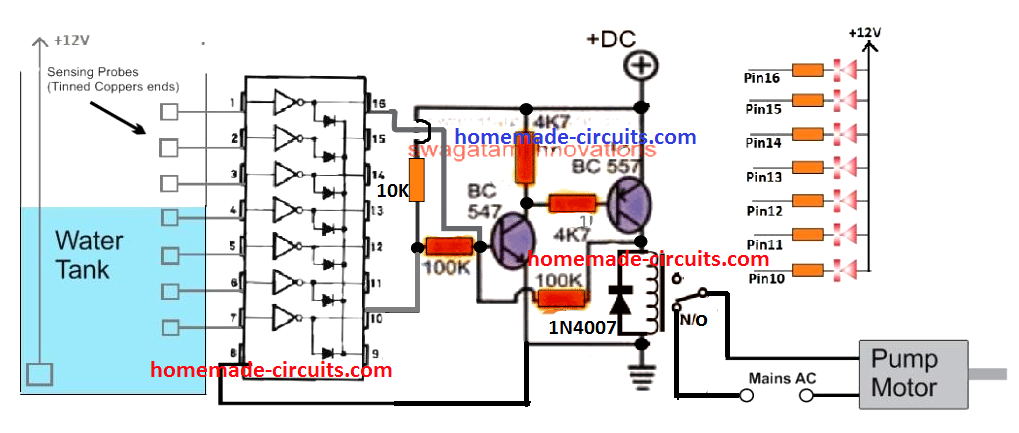The ULN2003 is a chip which contains seven separate sections, each made up of special transistors called Darlington pairs. These pairs are designed to manage moderate amounts of electrical current, up to 500 milliamperes, and can work with voltages as high as 50 volts.
You can use the ULN2003 to create a complete and automated system which controls and indicates the water level across seven stages, as demonstrated in the example provided.

Circuit working
The ULN2003 chip has a special circuit connected to its top and bottom pins that controls turning on and off a relay and a motor pump.
Imagine the water level is low, not touching the pin7 sensor. Then pin10 doesnt do anything, which lets electricity flow to BC547 through a resistor.
This turns on another BC557, that keeps both parts active through a connection with a 100K resistor.
This also turns on the relay, which starts the motor pump, and water begins to fill the tank.
Even when the water goes above the pin7 sensor, it does not stop the relay because of the way the BC547 and BC557 are connected with the 100K resistor.
When the water level gets high enough to touch the top sensor, pin1 of the ULN2003, it triggers pin16 to change, which stops the electricity flow to the BC547.
This turns off the relay and the motor pump, stopping the water flow.
Leave a Reply